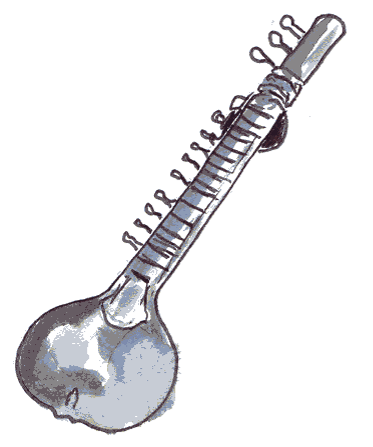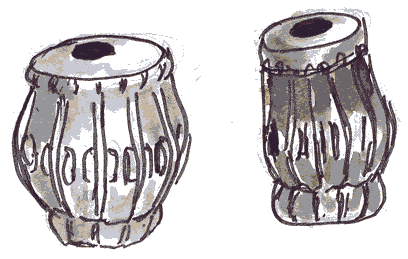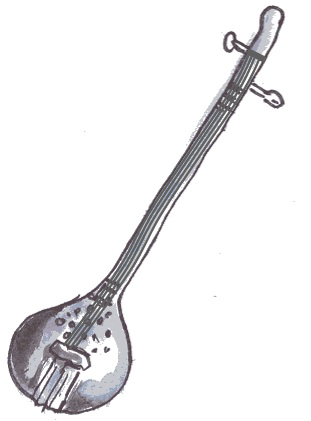| << Chapter < Page | Chapter >> Page > |
Can you hear any patterns relating to melody, rhythm and form (structure)?
Step 2
H omework/research
Collect pictures and articles related to Indian traditions (Clothing, food, musical instruments, materials, art including masks, etc.) and paste these in your learner’s journal. If you are able to make video copies of TV programmes dealing with any of these things, you can play it to the rest of the class.
Step 3
Background

Step 4
Instruments
Here are descriptions of three Indian musical instruments:
All these instruments are placed flat on the ground whilst being played.
Identify the instruments according to the above descriptions:



Step 5
The structure of indian music
Indian music basically is composed of three patterns, each of which is represented by a different instrument.
More traditional music – The Cape Minstrels (Module 1)
Like Indian music, the music of the Cape Minstrels is an example of traditional music in South Africa.
In African music culture, the use of musical instruments is much more comprehensive than in Western music culture.
In the previous two activities you have made become acquainted with the drum as used in Western classical music and in Indian traditional music.
But the drum actually is much more synonymous with Africa!
Step 1
Work in groups and do some research on the purpose, function and role of the drum (or another instrument such as the mbira) in general, or in specific cultures or certain regions. The educator will provide guidance.
Each group will have an opportunity to share their information with the class.
Step 3
By now you ought to have sufficient information to compare Western, traditional Indian and indigenous African music with regard to the following aspects:
| Western music………………… | Indian music……………….. | African music……………….. | |
| The term “music” | |||
| Notation |
| Vocal music | …………………….. | …………………….. | …………………….. |
| Function of the drum | |||
| Improvisation | |||
| Diatonic scale |
What conclusions can you make?
| Learning Outcomes(LOs) |
| LO 4 |
| EXPRESSION AND COMMUNICATION The learner will be able to analyse and use multiple forms of communication and expression in Arts and Culture. |
| Assessment Standards(ASs) |
| We know this when the learner: |
| MUSIC (4.3) |
|

Notification Switch
Would you like to follow the 'Arts and culture grade 7' conversation and receive update notifications?